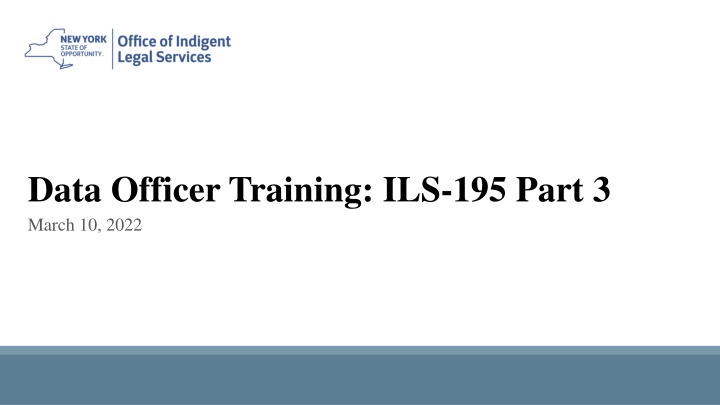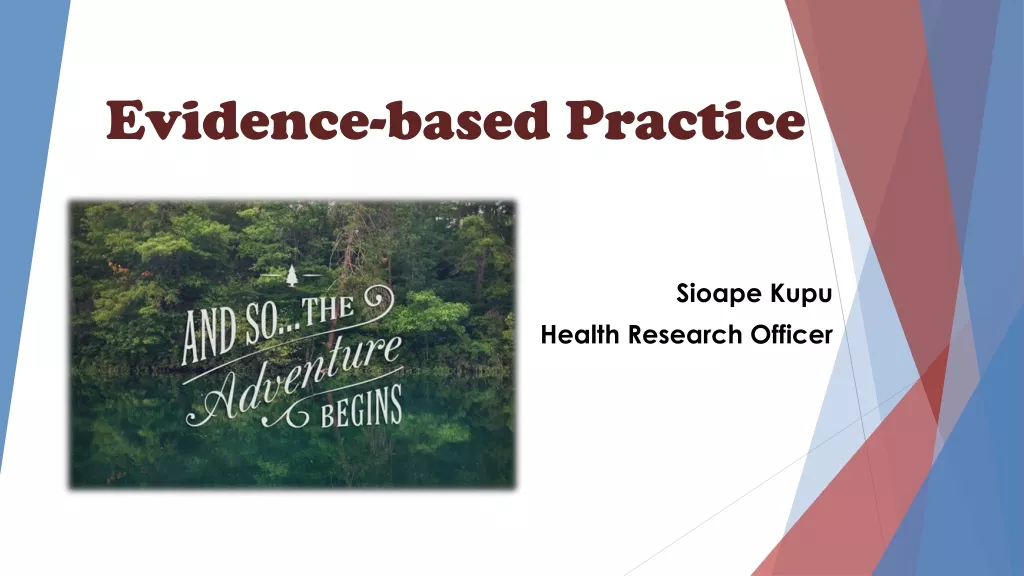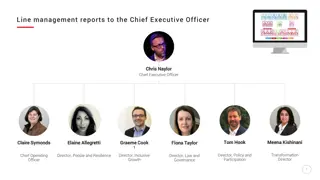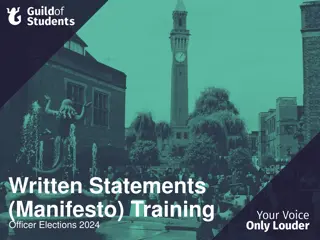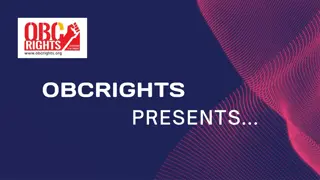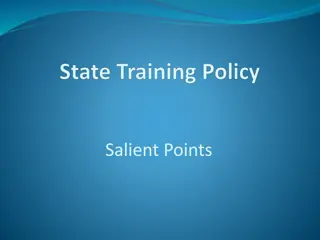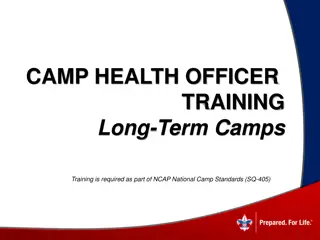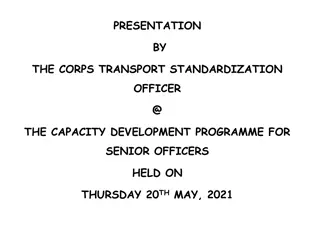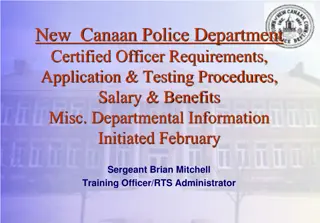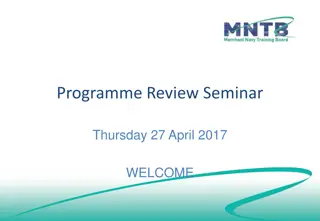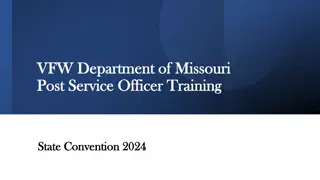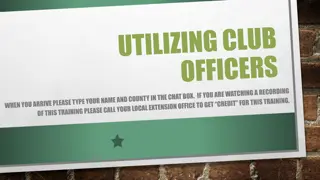Data Officer Training Overview and Activities
This dataset provides information on Data Officer Training for ILS-195, including past trainings, case activities, outcomes, staffing, expenditures, caseloads, and more. It also outlines the review of Part 3 of ILS-195, covering various aspects such as counting arraignments, closed cases, attorney activities, and juvenile offenders.
Download Presentation

Please find below an Image/Link to download the presentation.
The content on the website is provided AS IS for your information and personal use only. It may not be sold, licensed, or shared on other websites without obtaining consent from the author.If you encounter any issues during the download, it is possible that the publisher has removed the file from their server.
You are allowed to download the files provided on this website for personal or commercial use, subject to the condition that they are used lawfully. All files are the property of their respective owners.
The content on the website is provided AS IS for your information and personal use only. It may not be sold, licensed, or shared on other websites without obtaining consent from the author.
E N D
Presentation Transcript
Data Officer Training: ILS-195 Part 3 March 10, 2022
Data Officer Training March 2022 ILS-195: Overview 1 2 3 Case Activities and Outcomes Staffing & Expenditures Caseloads Training: December 2018 Training: June 2019 Training: November 2020 REPORT IN 2022 REPORT IN 2021 REPORT IN 2020 COLLECT DATA: JAN-DEC 2021 COLLECT DATA: JAN-DEC 2020 COLLECT DATA: JAN-DEC 2019
Data Officer Training March 2022 ILS-195: Past Trainings & FAQs https://www.ils.ny.gov Research and Data Analysis Annual Data Reporting data@ils.ny.gov
Data Officer Training March 2022 Outline Review Part 3 of the ILS-195 Counting Arraignments Outcomes Counting Closed Cases Use of non-attorney professional services in all cases Court dispositions in trial cases Partial representation of trial cases Court dispositions in appellate cases Attorney activities in appellate cases Reasons other than court disposition in all cases Adolescent and Juvenile Offenders
Data Officer Training March 2022 Counting Arraignments What is an arraignment? the first appearance by a person charged with a crime before a judge or magistrate, with the exception of an appearance where no prosecutor appears and no action occurs other than the adjournment of the criminal process and the unconditional release of the person charged (in which event arraignment shall mean the person s next appearance before a judge or magistrate)
Data Officer Training March 2022 Counting Arraignments OF TOTAL ARRAIGNMENTS at which client was in custody prior to arraignment at which client was ROR d at which client was released under non-monetary conditions at which bail was set at which client was remanded at which client received an ACD at which the client s case was dismissed at which the client pleaded guilty
Data Officer Training March 2022 Counting Closed Cases What is a closed case? cases where representation has terminated either because a final disposition was reached in court, or for some other reason such as the discovery of a conflict of interest, or the client opting to change counsel.
Data Officer Training March 2022 Counting Closed Cases Use of Non-Attorney Professional Services in all cases Court Dispositions of Trial Cases Partial Representation of Trial Cases Court Dispositions of Appellate Cases Attorney Activities in Appellate Cases Reasons Other than Court Disposition for all cases
Data Officer Training March 2022 Counting Closed Cases Use of Non-Attorney Professional Services in all cases Use of Investigators, Experts, Interpreters, and Social Workers Court Dispositions of Trial Cases Partial Representation of Trial Cases Court Dispositions of Appellate Cases Attorney Activities in Appellate Cases Reasons Other than Court Disposition for all cases
Data Officer Training March 2022 Counting Closed Cases Use of Non-Attorney Professional Services in all cases Court Dispositions of Trial Cases Disposed at Trial Fully Acquitted Disposed at Trial Found Guilty of Any Charge Disposed at Trial Dismissal Disposed by Guilty Plea to Top Charge Disposed by Guilty Plea to Lesser Charge Adjournment in Contemplation of Dismissal Covered or Dismissed in Satisfaction of Other Case Otherwise Dismissed Other Court Dispositions Partial Representation of Trial Cases Court Dispositions of Appellate Cases Attorney Activities in Appellate Cases Reasons Other than Court Disposition for all cases
Data Officer Training March 2022 Counting Closed Cases Use of Non-Attorney Professional Services in all cases Court Dispositions of Trial Cases Partial Representation of Trial Cases Counsel at Arraignment Only / After Arraignment Only Court Dispositions of Appellate Cases Attorney Activities in Appellate Cases Reasons Other than Court Disposition for all cases
Data Officer Training March 2022 Counting Closed Cases Use of Non-Attorney Professional Services in all cases Court Dispositions of Trial Cases Partial Representation of Trial Cases Court Dispositions of Appellate Cases Affirmed Reversed or Modified Anders Brief Filed and Case Dismissed Other Disposition (Dismissed for Other Reason, Withdrawn, etc.) Attorney Activities in Appellate Cases Reasons Other than Court Disposition for all cases
Data Officer Training March 2022 Counting Closed Cases Use of Non-Attorney Professional Services in all cases Court Dispositions of Trial Cases Partial Representation of Trial Cases Court Dispositions of Appellate Cases Attorney Activities in Appellate Cases Met With Client in Person Made Oral Argument Moved for Permission to Appeal to the New York Court of Appeals Reasons Other than Court Disposition for all cases
Data Officer Training March 2022 Counting Closed Cases Use of Non-Attorney Professional Services in all cases Court Dispositions of Trial Cases Partial Representation of Trial Cases Court Dispositions of Appellate Cases Attorney Activities in Appellate Cases Reasons Other than Court Disposition for all cases Representation Ended When Conflict Discovered Representation Ended When Client Found Financially Ineligible Juvenile Offender Removed to Family Court Adolescent Offender Removed to Family Court Representation Ended Prior to Case Disposition Prior to Case Disposition for Any Other Reason (e.g., Client Retained Private Counsel)
Data Officer Training March 2022 Adolescent and Juvenile Offenders Number of Violent Felony and Other Felony Cases with Adolescent Offender (16-17 years old) Number of Violent Felony Cases with Juvenile Offenders (13-15 years old)
